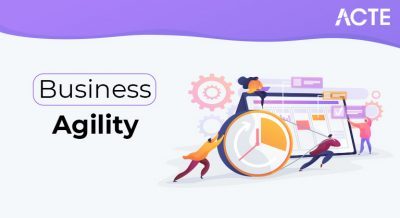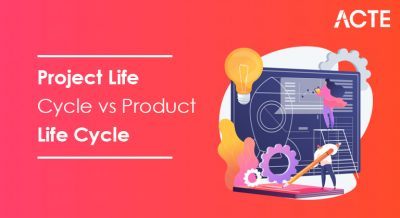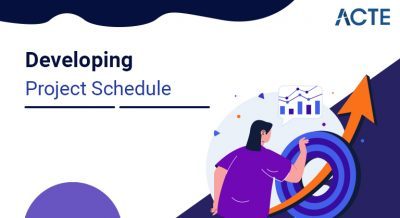
Some of the most popular certifications in the project management field are the Project Management Professional (PMP) and the Certified Scrum Master (CSM). Earning a CSM means you have mastered team roles, events, and artifacts. A CSM focuses on agile project management.
- What is a Scrum Master?
- What is a Certified Scrum Master?
- Roles a Scrum Master Plays
- What Does a Scrum Master Do?
- How to Become a Scrum Master?
- What Gaps I Filled After CSM Certification For my Scrum Project?
- Scrum master certifications
- Scrum master salaries & Jobs
- Conclusion
- The primary role that an Agile Scrum Master will play is that of a cultural and communication leader. It is their prerogative to manage external and internal communications towards and within the scrum team. Ultimately, it is extremely important for the entire organisation to understand how to properly interact with the scrum team. Stakeholders outside the group should always have access to the team’s project management platform to receive real-time updates on development progress. This email eliminates the need for asking, “Where are we with the project?” Because they can see it with their own eyes.
- Equally important is the interaction between team members, which must be productive to ensure that they achieve the goals of the sprint. The tailored nature of the sprint means that individuals should focus only on the tasks specified by the Product Owner. The Scrum Master will then identify the bottlenecks that hinder the performance of the team and the completion of the assigned tasks. These can include unnecessary interruptions, lack of focus, non-sprint activities, and more. In short, the success of the Scrum team depends on the effectiveness of the Scrum Master.
What is a Scrum Master?
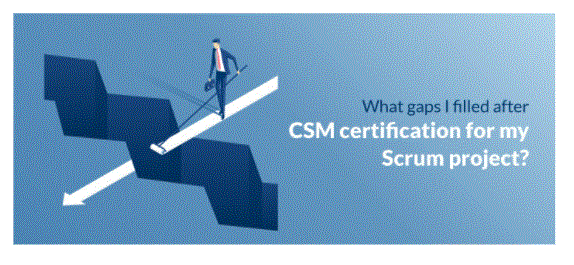
What is a Certified Scrum Master?
Scrum Master certification brings with it a number of professional and organisational benefits. We will discuss those shortly, but first, let’s talk about how to get the specific Scrum Master certification relevant to your situation.
Firstly, what exactly is Scrum Master Training? Can a detail-oriented, hyper-organised individual just assume the role of Scrum Master and expect success? Maybe sometimes, but most likely not all the time. Scrum Master training ensures they really understand the Scrum framework, can effectively serve the organisation and identify ways to keep the development team highly productive.
So what is a scrum master course? They are training sessions that can be conducted both in person and virtually. As an example, through the Scrum Alliance, one can earn three different levels of Scrum Master certification.
First, a core certificate: Students learn introductory scrum concepts critical to success in order to serve as a Scrum Master.
Second, an advanced certification: This is available after a full year in the Certified Scrum Master role. This certification is designed to develop their skill set, including their unique ability to extend the Scrum framework beyond their team. They can lead the Scrum implementation in the remaining departments of your software company.
Finally, a professional level: Certified Scrum Master professionals demonstrate complete mastery of all aspects of the Scrum framework. They are committed to the process and you should count them among your most valuable assets. They are the ones who really “get it” and know the value of agile processes inside and out.
Although certification is not always necessary, a Scrum Master who has invested time and money in their career demonstrates a level of commitment to your company that your stakeholders are looking for. At a minimum, managers should expect employees to take basic training courses if they want to become the team’s scrum master.
- Identification of problems
- Include solution
- Managing Sprint Retrospectives.
- The Scrum Master plays a unique role within the software organisation. First, they should ensure that the rest of the organisation understands the operational structure of the Scrum team. Companies new to Agile methods often face resistance from those accustomed to older methods. It’s not uncommon for someone to email a software developer requesting changes or asking for updates. However, this breaks the scrum framework and can delay the completion of sprint tasks.
- A more appropriate mode of communication would be to have a member of the same team have access to the Scrum project management software, so that they can see the status updates themselves without interrupting the development team. In addition, changes need to be reported to the Product Owner who may add requests to the backlog.
- Where does the Scrum Master come into play here? It is their job to make sure that everyone outside the scrum team understands the process. In turn, this makes it easier to adopt Scrum organization-wide down the road – another job for the Scrum Master.
Roles a Scrum Master Plays:
Next, let’s look at the Scrum Master Role. In fact, the Scrum Master is the glue that binds the entire Agile framework together. Without his leadership, the Scrum team would lack the necessary checks and balances for any agile system. The role of a Scrum Master in Agile fills this gap. However, their roles and responsibilities change for each section of the scrum team:
Development team:
Since the development team is doing most of the tasks assigned to the sprint, the Scrum Master plays an extremely important role for them. When sprint tasks are left unfinished, it delays the software development process. Then, out of necessity, the Product Owner starts pushing back the deadline.
Customization becomes important here. During the daily scrum the scrum master should identify the risk for the sprint early. Scrum theory calls this divergence: incomplete tasks lead to greater risks for the organization. The Scrum Master reduces it to:
Product owner:
Once the Product Owner has determined the direction of the upcoming Sprint, it is now the Scrum Master’s job to communicate with the rest of the team. As a servant leader, product backlog reviews are an extremely important component. One-on-one helps with effective planning of what should happen within that sprint.
Organisation:
- The daily duties of a Scrum Master will vary depending on the needs of the group. On Monday, he may lead the sprint kick-off meeting. Tomorrow, they may have a face-to-face with the Product Owner to review the Product Backlog items. At the end of the sprint, they will lead a retrospective review. Regardless, the goals of a Scrum Master are simple: to ensure that the Scrum framework is followed, successful, and reproducible across the organisation.
- So what does a Scrum Master do in Agile? They act as the point person for the successful implementation of the framework. As an example, let’s revisit the product change we mentioned a few moments ago. Some development teams will switch tasks in the middle of the sprint. While in the grand scheme of things a single extra task may not affect productivity, it does set a precedent. The more of these that are added to a single sprint, the less and less the development team will complete the planned tasks.
- It is the job of the Scrum Master to ensure this does not happen. They should look for these deviations. In short, it is their responsibility to ensure that everyone understands the goals, structure and functionality of the Scrum framework.
What Does a Scrum Master Do?
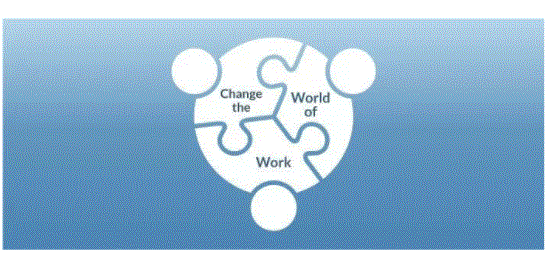
- As more and more organisations adopt the agile approach, driven employees have wondered how to become a professional scrum master. First, it is important to understand how to become a Certified Scrum Master.
- Be ready to learn. Scrum creators Ken Schwaber and Jeff Sutherland put together an excellent guide. You can download it here. Read it, imbibe it and start practising its methods.
- Next, view courses online or locally to earn your core certification. Be prepared to wait. Advanced certification requires at least 1 year of basic certification. And, even more study and experience are required to move to the third stage: Professional Scrum Master certification.
- Finally, embrace Scrum. As you grow in your understanding of becoming an Agile Scrum Master, you will start speaking it and building it up as a second language. It’s a good thing! This shows your commitment to the framework and is a sign of future success!
How to Become a Scrum Master?
- Organisation leadership and training in Scrum adoption
- planning scrum implementation within the organisation
- Helping employees and stakeholders understand and enact Scrum and empirical product development
- Scrum team productivity increases due to change
- Working with other Scrum Masters to increase the effectiveness of Scrum in the organisation
What Gaps I Filled After CSM Certification For my Scrum Project?
The sales department has always handled the winning projects for your company saying that we follow “agile methodology”. The whole organisation is full of noise of ‘Follow Agile’. But are we really agile and do we follow it properly?
1. Trained my team, management, customer and vendor on scrum:
Normally, when a new project comes along, management wants us to start with a kick-off meeting and start coding right away. According to the team, the project is always underestimated and we start with activities like planning, coding, module/task division etc. as soon as possible.
2. Scheduled Product Backlog Grooming Meetings and Follow-up Consistently:
Agile expects us to do enough and JIT documentation, but the Product Backlog is a very important document for the project and has to be updated regularly by the Product Owner (PO). The PO will have to update the Product Backlog based on market requirements or the importance of the release. Unlike BRD, it is the only document used by the team for creating user stories, estimating, planning sprints and finally coding, testing and then releasing. If the PO is not aware of how to go about it, the Scrum Master can help. Hence, ensure that the Aadhaar document is updated regularly
3. The Scrum Master (SM) is a Servant Leader and is no longer a Manager:
I was prime minister for almost 10 years, it was difficult to get into the role of servant leader, but we have to wear the cap of servant leader. Instead of controlling or just delegating the work, I realised, I now have to work with and for the team. The SM is helping the team break out of obstacles, the SM is keeping the team together, motivating them throughout the project.
4. Update the Board Regularly:
Needed to post daily standups while we were too lazy to update the latest information on the whiteboard. The team has to update the board immediately after the daily standup and facilitate it to the SM. After a review or retrospective post, we started creating burndown charts, latest review comments, and some motivational notes. Simultaneously I saw an incredible change in the mindset of the team and the management. It kept the atmosphere light, motivated and the team started to perform more.
5. Not to Operate Retrospectively:
Before CSM training, I was just aware that there is a meeting called a retrospective. From CSM training I got to know how to organise this meeting, when and who is the audience and what should be the agenda of the meeting. Now I understand, this meeting is most important for the team to improve the process, avoid the mistakes that we made in previous iterations. With traditional project management, we always have a “lesson learned” when closing a project. Have you ever read those lessons when starting a new project? Well, I never did. But with the retrospective meeting, my team and I got into the habit of applying the lessons learned right away.
6. Extending as Late as Possible:
The results of the Sprint Planning meeting are in the Sprint Backlog and we only detail those items that are in the current Sprint. The other items in the Product Backlog are not detailed enough to begin with coding. It really helped us to save time and reduce the requirement gathering time in the initial stages of the project even if the requirements are not clear enough. So, as the project progresses, we collect more information and this helps us to elaborate on other requirements as well.
7. Informing the Product Owner about the Responsibilities:
The most difficult task for me was to make my clients aware of the responsibilities of a PO. We all know how important clients are to a company. Customers are the king of the world. Somehow, I convinced the management that I needed to convey the responsibilities to the PO or BA from the client site. The duty of the customer is not only to see how the product looks and move things forward to the management, but the customer must be aware of how to accurately articulate your needs, review understanding and move things forward. To suggest rather than to enhance. Clients run away saying they don’t have time for reviews/demos, retrospectives etc. It is the duty of the scrum master to make them and management aware how important it is to be present for events. Otherwise, in the end, only the team is to blame when the project is not successful.
Generally, Scrum Masters carry out the following responsibilities, as set out in The Scrum Guide by Ken Schwaber:
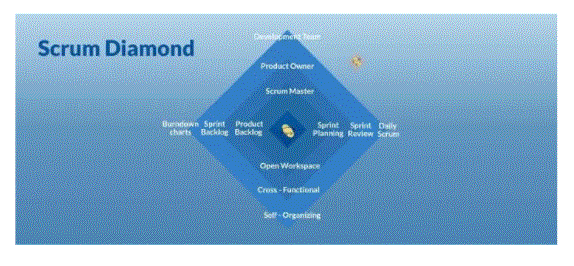
Scrum master certifications:
Two well recognized organisations, the Scrum Alliance and Scrum.org, offer Scrum training and certification. The Scrum Alliance, founded in 2001, is one of the more influential organisations in the agile community. It is a non-profit organisation with over 500,000 certified physicians worldwide. The Scrum Alliance offers the following Scrum Certificates:
Certified Scrummaster (CSM): CSM “servants act as leaders, helping the rest of the Scrum team to work together and learn the Scrum framework.”
Certified Scrum Product Owners (CSPOs): CSPOs are the “individuals who are closest to the ‘business side’ of the project. They are charged by the organisation to ‘get the product out’ and do the best possible job of satisfying all stakeholders.”
Certified Scrum Developer (CSD): The CSD certification “explains to students the most important tools and techniques that need to be applied to build good software in the iterative and incremental fashion that Scrum requires.”
Certified Scrum Professional (CSP): A CSP “challenges Scrum teams to improve the way they implement Scrum and other Agile methods for every project.” Scrum.org was founded in 2009 by Ken Schwaber and Jeff Sutherland, the originators of Scrum, as a “global organisation dedicated to improving the profession of software delivery by bridging gaps, so that there is a need for work and work.” The products are reliable.”
Scrum.org offers Professional Scrum Master (PSM) Certificates at three levels:
PSM I: PSM I certificate holders “provide that they understand Scrum as described in the Scrum Guide and the Concepts of Applying Scrum.”
PSM II: PSM I certificate holders “prove that they have an understanding of the underlying principles of Scrum and can apply Scrum effectively in complex, real-world situations.”
PSM III: Holders of the PSM I certificate “have a deep understanding of the application and practises of Scrum and Scrum values in a variety of complex team and organisational situations.”
- Years Experience Percentage Respondents 25th Percentage Mean 75th Percentage Mean
- None 31% $85,000 $106,000 $130,000 $110,319
- 1 to 5 49% $91,000 $132,063 $114,522 $142,816
- 6 or more 20% $104,000 $125,000 $149,000 $128,128
- Scrum Master Jobs on LinkedIn
- recruitment.net
- Project Management Institute
- Really Scrum Master Jobs
Scrum master salaries & Jobs:
Based on findings from the Project Management Institute’s “Earning Power: Project Management Salary Survey, Tenth Edition”, project managers working in Agile/Interactive/Incremental Project Management/Scrum earn:
Scrum master job:
Since Scrum can be applied to virtually any organisation, Scrum masters are in high demand as companies look for ways to complete their projects and bring their products to market faster. In fact, according to LinkedIn’s “Most Promising Jobs of 2017,” job openings for scrum masters grew 104 percent year-over-year from 2016, and have a career advancement score of 8 out of 10. These findings are based on career potential. Advancement, job growth and salary. Research from the US Bureau of Labour Statistics shows that the demand for certified scrum masters grew 24 percent in 2018.
Project management offices (PMOs) or product development departments in many business sectors employ Scrum Masters to streamline their software development processes. This may include software, healthcare, aviation, technology, engineering, construction, real estate, publishing, financial, marketing, manufacturing, education, insurance, government, and others.
The following four job boards provide a good starting point for new job seekers as a Scrum Master:
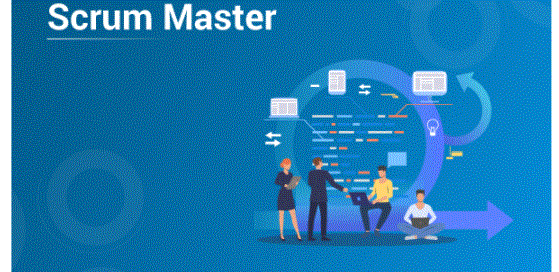
- With agile rapidly becoming standard practice in most companies, Scrum Masters are in great demand. Here is a look at the Scrum Master role, relevant certifications, expected salary and career opportunities.
- Scrum is a powerful framework for implementing agile processes in software development and other projects. This highly adopted framework uses short iterations of work, sprints and daily meetings, called scrums, to tackle discrete parts of a project in succession until the project is completed. There are three major roles in Scrum: Scrum Master, Product Owner, and Scrum Team member.
- The Scrum Master is the leader of a Scrum team and is responsible for championing a project, providing guidance to the team and product owner, and ensuring all agile practises are followed by team members. The Scrum Master not only addresses all aspects of the agile development process but also serves the business, product owner, team and individuals and facilitates communication and collaboration between all these elements.
Conclusion:


